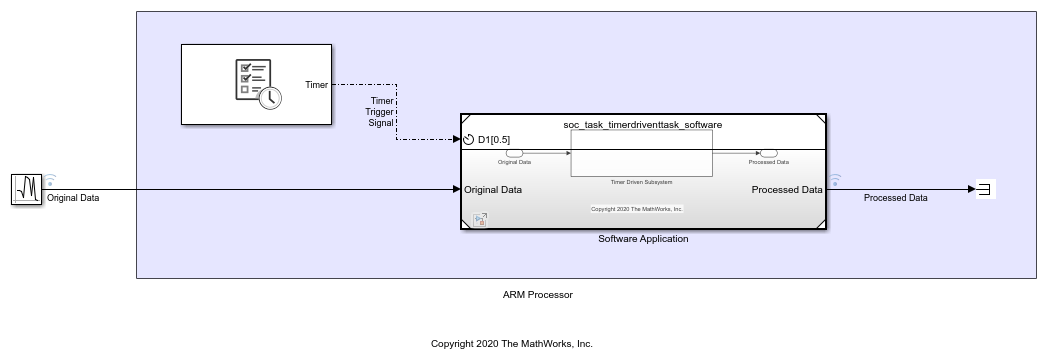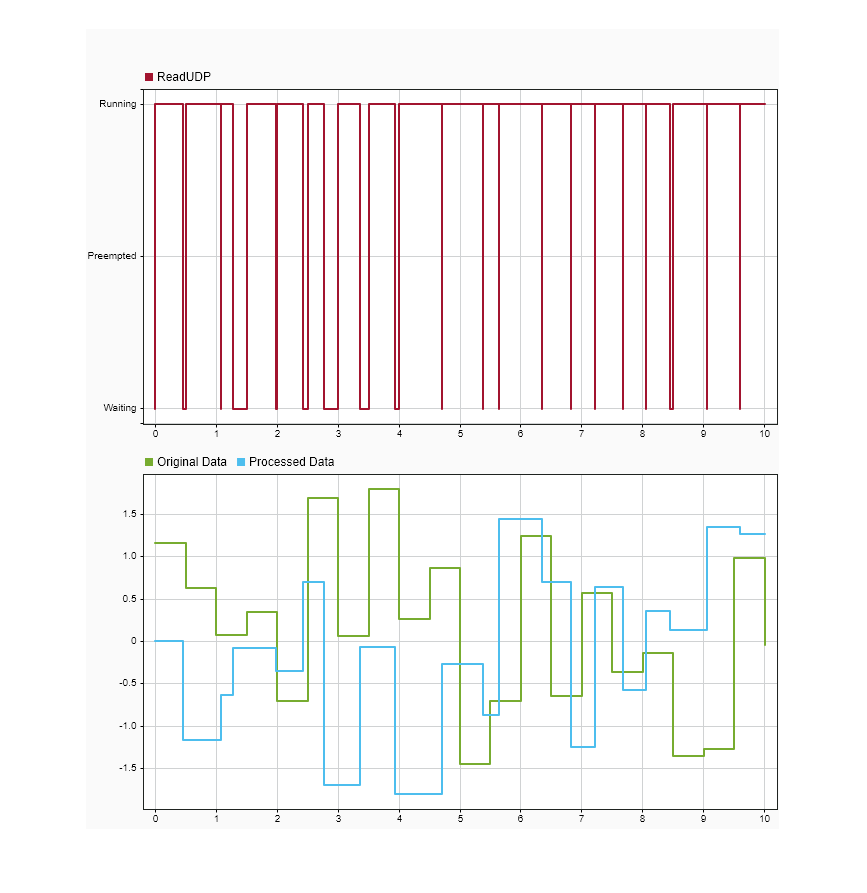Task Manager
Create and manage task executions in Simulink model
Libraries:
SoC Blockset /
Processor Task Execution
C2000 Microcontroller Blockset /
Scheduling
Embedded Coder Support Package for Infineon AURIX TC3x Microcontrollers /
Scheduling
Embedded Coder Support Package for Infineon AURIX TC4x Microcontrollers /
Scheduling
Description
The Task Manager block simulates the execution of software tasks as they would be expected to behave on an SoC processor. With the Task Manager, you can add and remove tasks from your model that can either be timer-driven or event-driven. Tasks can be represented in a model as rates, for timer-driven tasks, or function-call subsystems, for event-driven tasks, contained inside a single Model block. The Task Manager executes individual tasks based on their parameters, such as period, duration, trigger, priority, or processor core, and the combination of that task with the state of other tasks and their priorities in the running model.
In simulation, this block uses code generation to improve simulation speed. This entails some overhead when first simulating, but subsequent simulations are faster if the block settings remain unchanged. For more information, see Interpreted Execution vs. Code Generation.
Note
The Task Manager block cannot be used in a referenced model. For more information on referenced models, see Model block.
The Task Manager block provides three methods to specify the duration of a task in simulation:
A probability model of task duration defined in the block mask.
From a data file recording of either a previous task simulation or from a task on an SoC device.
Input ports on the block, which you can connect to more dynamic models of task duration.
Examples
Limitations
A model containing a Task Manager blocks does not support simulation stepping. For more information on simulation stepping, see Debug Simulations in the Simulink Editor.
Ports
Output
Input
Parameters
Extended Capabilities
Version History
Introduced in R2019a


